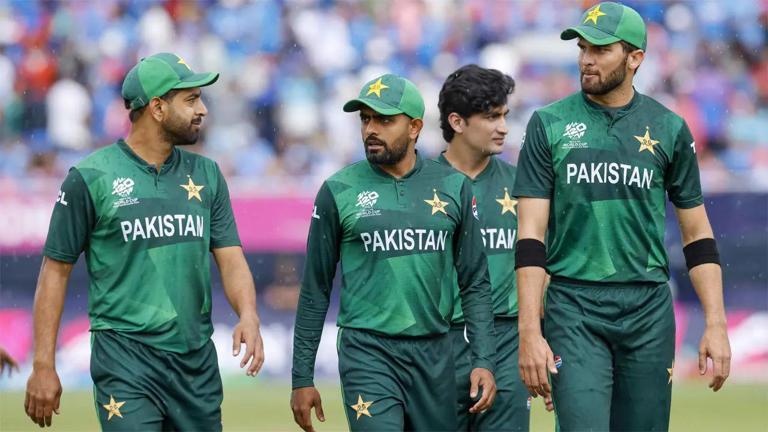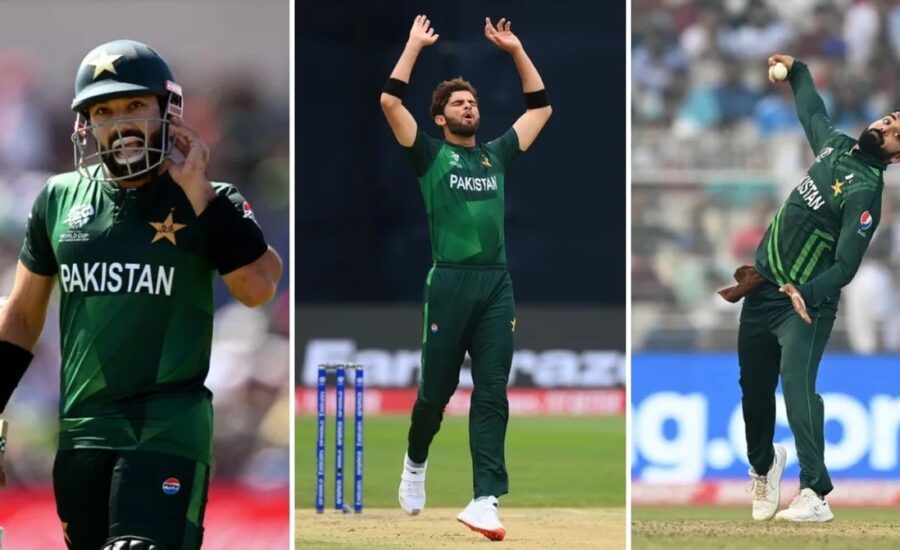PCB was supposed to give Babar Azam the ODI captaincy for the next white-ball matches as well, but the batter offered his resignation.
According to insiders, Pakistan may have different captains for each of the three formats of cricket due to the team’s demanding schedule and the potential strain on a single white-ball captain. Babar Azam was supposed to take over as ODI captain for the forthcoming white-ball matches from the Pakistan Cricket Board (PCB), but the dynamic batsman announced his resignation at midnight on Wednesday in order to concentrate on his batting. According to insiders, choosing the next captain for the shorter formats would require more work for the selection committee and white-ball head coach Gary Kirsten.
“Muhammad Rizwan is the obvious choice for the white-ball captaincy given that, along with Babar, he is the only player who is an automatic selection in all formats of the game,” according to a source.
“But things are not so simple because, with the hectic international calendar of the team, the workload on Rizwan is a worrying factor for red-ball coach, Jason Gillespie, Kirsten, the PCB and the selectors,” he stated.
Since Shaheen Shah Afridi, Babar, and Rizwan are all format players, managing the workload will be crucial.
In November and December, Pakistan will play 18 ODIs and 20 T20Is in Australia, Zimbabwe, and South Africa. A two-test series will take place in South Africa.
After returning home in January, the team will play a Two-Match series against the West Indies. They will also play an ODI tri-series against South Africa and New Zealand before competing in the ICC Champions Trophy in February and March.
Following the ICC tournament, the Pakistan team will travel to New Zealand for a white-ball series, and the PCB will then organize the Pakistan Super League.
“Babar was captain in all three formats for more than three years but Kirsten and the selectors have their reservations over whether Rizwan would be able to handle the workload in the coming months of not only playing all the formats but also leading the side in ODIs and T20Is,” according to a different source.
He went on to say that the PCB might name a strong vice-captain for Rizwan and specify that the wicketkeeper-batter would get plenty of rest to handle his workload. Or they might choose to have separate leaders for the ODI and T20I formats.
The source continued, “In which case, Rizwan’s deputy will lead the team.”
“Shadab Khan, Saim Ayub, Shan Masood and Shaheen are the other candidates under consideration for either the role of Rizwan’s deputy or leading the T20I or ODI side,” he stated.
According to the source, Kirsten had already told the PCB that Babar didn’t think any other player could manage the demands of captaincy in two formats, following his decline in form and confidence.

Although the Pakistan Cricket Board (PCB) has a history of making audacious choices, there are new rumors that the team is considering a drastic move: selecting three different captains for the Test, ODI, and T20 formats. There has been a lot of discussion about this possible choice among analysts, players, and fans. Although the concept appears straightforward at first, insider information reveals that “things are not so simple.” We’ll examine the intricacies of this possible transfer and its effects on Pakistani cricket in this post.
The Modern Cricket Idea of Split Captaincy
Split captaincy is a familiar idea in international cricket. A number of elite cricketing nations, including England, Australia, and India, have embraced the practice of having different captains for different forms. The goal is to guarantee that leadership is in line with the particular requirements of each format while also relieving some burden from a single person. However, team chemistry and leadership prowess play a significant role in split captaincy’s effectiveness.
Who Is in Charge of Pakistan Cricket Right Now?
Babar Azam has been Pakistan’s captain since 2019 and has led the team in all three formats. Though Babar has demonstrated his abilities as a world-class batsman and capable captain, concerns have been raised regarding his workload due to the demands of captaining in several formats. The PCB may choose to implement a more specialized leadership structure in light of forthcoming series and international events.
Why Think About Different Captains?
Various variables are fuelling the issue around distinct captains in Pakistan cricket:
Workload management: Leading across formats can negatively impact a player’s physical and mental health, especially during the hectic schedule of international cricket. Partitioning the captaincy may facilitate a more efficient handling of this workload.
Format Specialisation: Different tactics and strategies are needed for each format—Test, ODI, and T20. Specialized captains enable more targeted leadership that meets the particular requirements of every format.
Player Development: Under the new captaincy structure, other senior players who have demonstrated potential may be given the chance to take on leadership roles. This will strengthen the pipeline of future leaders.
The Difficulties of Selecting Three Captains
There are advantages to designating three distinct captains, but there are drawbacks as well. Implementing this decision could result in a number of issues since, as reports state, “things are not so simple.” These complications could include:
Squad cohesion: Having distinct leaders for every format may cause the squad to feel divided. Different leadership philosophies may be complicated for players to adapt to, which could harm team cohesiveness.
Managing Egos: Although cricket is a team sport, individual achievement and appreciation are also quite significant. Several captains could create conflicts of interest and cause some players to feel underappreciated or unappreciated.
Selection Issues: Should Pakistan decide to use dual captaincy, the selection process may be further complicated. The PCB may have to make complex judgments because a player who cuts one format may need to be a better captain in another.
Pressure from fans and the media: The cricket community is very passionate, particularly in Pakistan, and any decision that affects the national squad is closely watched. If the PCB chooses to use divided captaincy, it will need to control media narratives and fan expectations carefully.
Possibilities for Independent Captains
The most important thing to answer is: who are the front-runners if the PCB decides to name separate captains? Here are some possible contenders for each format:
Captain of Tests: Babar Azam
Babar Azam will continue to serve as Test captain despite talks about a split captaincy. He is a perfect leader for the game’s most extended format because of his capacity to lead innings and perform well under duress. Pakistan will want to keep Babar’s calm temperament and knowledge of Test cricket.
Captain of ODI: Muhammad Rizwan
One of Pakistan’s most dependable batters and wicketkeepers these days is Mohammad Rizwan. Since he demonstrated strong leadership throughout his time-serving as vice-captain, many people think he would be an excellent choice to head the ODI team. Rizwan is a solid contender for the 50-over format because of his dedication to his craft and his reliable results.
Captain for T20: Shaheen Afridi
The fiery left-arm pacer Shaheen Afridi has emerged as one of the world cricket team’s most feared bowlers. He could be a contender for T20 captaincy because of his aggressiveness and tactical sense. Afridi can lead in the game’s shortest format thanks to his expertise in international competitions like the PSL.
Past Examples of Split Captaincy: Successes and Failures
Several international teams have tried dual captaincy with varying degrees of success. Here are a few examples:
England: England has had exceptional success with split captaincy. Eoin Morgan guided his white-ball squad to success in the 2019 World Cup, while Joe Root has been a dependable hand in Test cricket.
India: India also embraced split captaincy when MS Dhoni handed over the Test captaincy to Virat Kohli, while continuing to lead in limited-overs forms. Given the mutual respect and understanding between the two players, this transition went very well.
Australia: The outcomes of their split captaincy experiment could be more consistent. Although it was effective under players like Steve Smith and Ricky Ponting, it has also caused some conflict in more recent times.
These illustrations highlight the need for caution on the part of the PCB and illuminate the advantages and disadvantages of split captaincy.
In summary, a pivotal moment for Pakistani cricket
In Pakistani cricket history, the choice to name three different captains may have been pivotal. Both sides have strong points, but the PCB needs to weigh the benefits and dangers carefully. The timing of this choice is essential, as major series and international tournaments are approaching. Time will tell if Pakistani cricket can achieve new heights under split captaincy, or if the already tricky situation will get more complicated.
